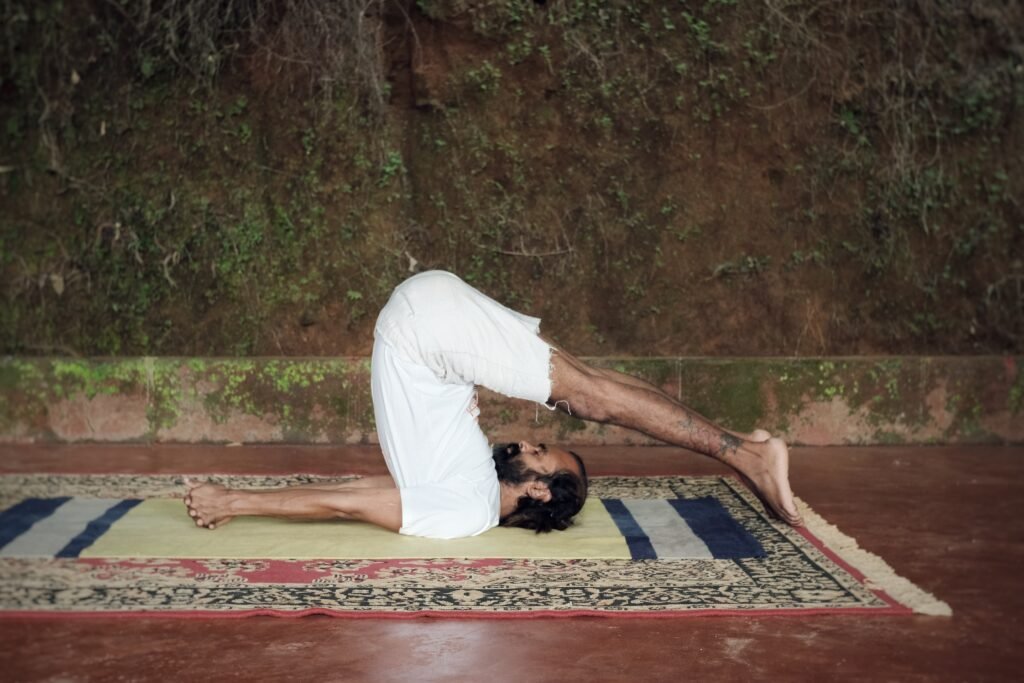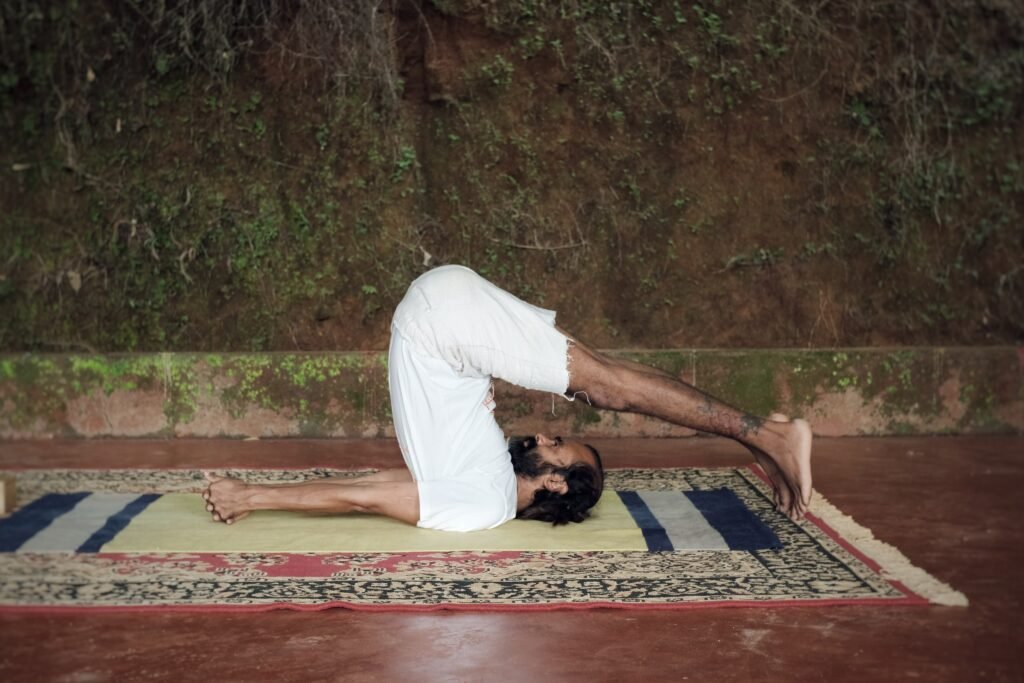
The “plow” (or “plow”), a traditional farming instrument frequently used in Indian agriculture to prepare the land for sowing the crops, gives Halasana (Plow Pose) its name. As a result, “Hal” means “plow” or “plow,” while “asana” means “position” or “posture.”
Like a plow is used for digging soil, Halasana (Plow Pose) induces deep rejuvenation in the body and soul. Halasana is an easy pose for someone who has been practicing for more than two years, but for those who are just beginning their yoga practice but are ready to challenge their bodies with the proper instruction, this pose may be a little challenging.
Suppose a practitioner can hold Halasana (Plow Pose), which requires a lot of confidence and tranquillity in the body. In that case, it is regarded as one of their finest asanas (yoga positions).
If the practitioner is comfortable in this pose, they enhance the beauty of yoga and are open to larger challenges.
Steps to a Plow Pose
- Lie on your back with your arms at your sides and your hands firmly planted on the ground.
- Raise your legs to a 90-degree angle as you inhale.
- Roll your pelvis off the ground as you exhale, bringing your legs back toward your head. Slowly drop your legs to the ground from above.
- To provide support, place your hands on your lower back.
- Position your pinky fingers with the tips facing up toward the ceiling, one on each side of your spine.
- To raise your spine, walk your hands up it.
- Bring your elbows and shoulder blades as close together as possible.
- You can release your arms across your body with palms down or interlace your fingers if your toes touch the ground.
- Remain in this position for two minutes at most.
- To release, place your hands, palms facing down, side by side with your body.
- Gently lower your spine to the floor as you exhale.
- Stop and stretch your legs 90 degrees.
- As you exhale, either bend your knees and place your feet on the ground or contract your core muscles and slowly lower your legs to the floor.

Benefits of the Plow Pose:
-
Health (Anatomical) Advantages
- Muscles: The muscles in the legs, the back, the abdomen, the hamstrings, the neck, etc. This position engages practically all of the muscles in the body, from the tips of the toes to the neck region.
- Flexibility: Spine, neck, shoulders, legs, and hip flexibility. These muscles receive adequate stretching while in the position, increasing their flexibility.
- Weight Loss: With continued practice, the additional pounds around the thighs, tummy, hips, and neck gradually disappear.
-
Health Advantages
- Organs: Enhances the function of the kidneys, spleen, pancreas, pituitary, thyroid, and endocrine glands, as well as the abdominal organs, liver, kidney, and pancreas. The reproductive system is activated.
- Digestive system: Promotes digestion and relieves constipation. Releases gas and indigestion-related upper body discomfort.
- Therapeutic: Asthma, colds and coughs, menopause, headaches, sinusitis, insomnia, diabetes, and stress are all treatable conditions. This yoga stance works every muscle in the body. Therefore its health advantages don’t just apply to some parts of the body. The mind is also trained to maintain stability and calmness while performing this yoga stance, which provides the much-needed energy to remain steadfast and optimistic. The practice of this stance makes the entire body light and effortless.
CONTRAINDICATIONS TO PLOW POSE:
-
Injury and Surgery:
This posture should be avoided by students who have recently undergone stomach surgery. As the abdomen stretches in the plow pose, the stitches may come undone and cause pain.
Additionally, individuals with any injury to their legs, knees, hips, lower back, or neck should practice slowly and with the help of an experienced instructor.
-
-
Lack of Body-breath connections:
-
Lack of awareness of the breath can turn it into a mechanical action and reduce the time the posture can be held. It would help if you reminded your students to keep taking calm, deep breaths in and out while maintaining the position.Being conscious of the breath also makes it simpler to direct your awareness to other areas of the body to check for any tightness.
-
-
Physical Weakness:
-
Students who have been inactive physically for a long time or who lack strength in their lower back and core can start by practicing the Plow Pose with one leg raised at a time for a few weeks before gradually progressing to lifting both legs.
Total beginners can also access the Plow Pose by employing props.
Additionally, individuals with heart issues or severe sciatica should avoid this pose.
This yoga pose should not be performed by students who have high blood pressure since it causes the stomach’s blood circulation to increase, which is harmful to those with hypertension.
Acute back pain sufferers should also avoid this stance because maintaining it might put a strain on the lower back and make the discomfort worse.
Others: Pregnant women should refrain from adopting this position because doing so tightens the lower abdomen and pelvic region, which harms the developing fetus.
MODIFICATIONS TO PLOW POSE
- Use a folded blanket or mat beneath your shoulders for additional comfort and support. The edge should be aligned with your shoulders’ tops. This releases tension from your neck, lessens neck flexion, and enables the softening of the back of your neck.
- You can put your feet up on a cushion, block, or chair seat if your toes don’t reach the floor. You could lean your feet up against a wall as well.
